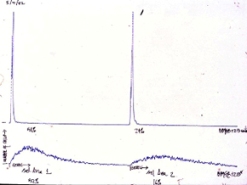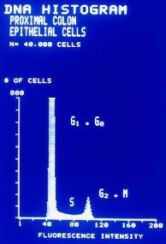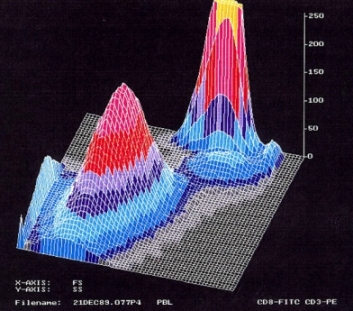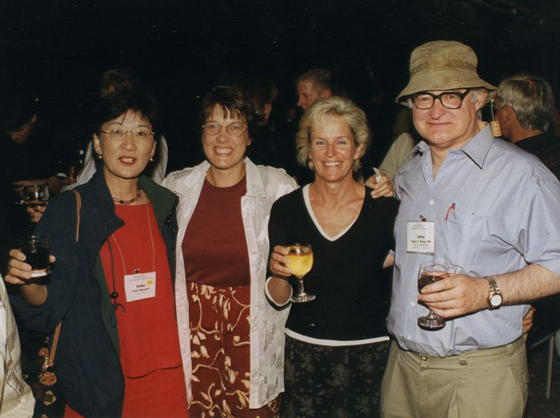Home Cytometry History Individual Histories Dave Coder

Dave Coder
My start in flow cytometry began as a post-doc and largely out of laziness. A project involved the investigation of cell/cell binding and would have meant counting labeled bacteria adhering to erythrocytes in a microscope—too tedious (and inaccurate) to imagine. A flow cytometric solution proved useful and opened my eyes to a vast range of possibilities for cell analysis. Having no local flow cytometry expertise, I attended the Annual Flow Cytometry Course when held for the first time at the National Flow Cytometry Resource at Los Alamos National Lab. The week-long experience with the leaders in field who were willing to talk about any hare-brained idea and make great suggestions was an eye opener. This was a group of brilliant people who were very down to earth and liked to have a good time. The experience made it clear whom I’d like to work with, and that I’d have fun doing it. Contacts with many there have endured.

Histogram analysis before computers: analog tracing from storage ’oscope on Ortho Cytofluorograph, integrated by hand to infer numbers of bound bacteria; Dave Coder’s first flow cytometry project

A computer makes analysis much easier; Data General computer and Ortho software for Ortho Cytofluorograph
Over the years, I’ve worked for and with many in industry as well as academia, building up laboratories at Fred Hutchinson Cancer Research Center and the University of Washington Medical School. Seeing deficiencies in off-line data analysis, colleagues and I developed one of the first third party list mode analysis packages, ReproMan for PC computers. Its successor, ReproMac for the Macintosh, was an improvement.

3-D plot to promote ReproMan list mode analysis software; plot of forward scatter/side scatter of human whole blood, Dave Coder donated blood sample, prepped sample, collected data, made plot.
Since I was initially trained as an architect, the visual display of data remains an area of interest, and is still a challenge as we can measure more features of ever increasing populations. Subsequently, I’ve been an independent consultant providing refurbished instruments, service, and applications consulting to a range of clients in academia and business. I have many good friends among virtually all the manufacturers of instrumentation, software, and reagents for flow cytometry and many in imaging cytometry. As of this writing, I’m in sales and applications for Guava Technologies.
Contributions to cytometry internationally have taken large parts of my time. I’ve served on or chaired a variety of ISAC committees. To help with the dissemination of information about cytometry, I started the official ISAC web site just prior to the Rimini ISAC Congress. To ease the process of finding information and to simplify the organization of meetings, I worked with Joe Trotter to put together the first on-line submission and review of abstracts on the ISAC web site for the Toronto Sam Latt meeting.

Jim Watson and friends enjoy a glass of Australian wine at the Sam Latt conference, Hamilton Island, Queensland
Having just finished reading Jennet Conants’s book on Los Alamos (“109 East Palace: Robert Oppenheimer and the Secret City of Los Alamos;” Simon & Schuster, 2006) I was reminded again of the mountaintop location of the National Flow Cytometry Resource where I and many became enamored with cytometry. The possibilities of the technology for the advancement of the biological sciences continue to expand, the friendships endure, and the camaraderie among those in the field all validate my choice of career made 25 years ago.

- Dave Coder
- Cytometry Raconteur
- davecoder@gmail.com
